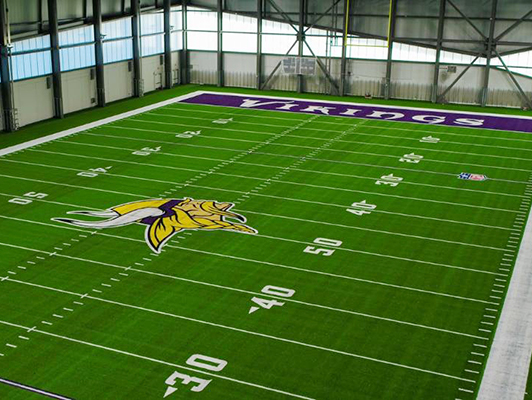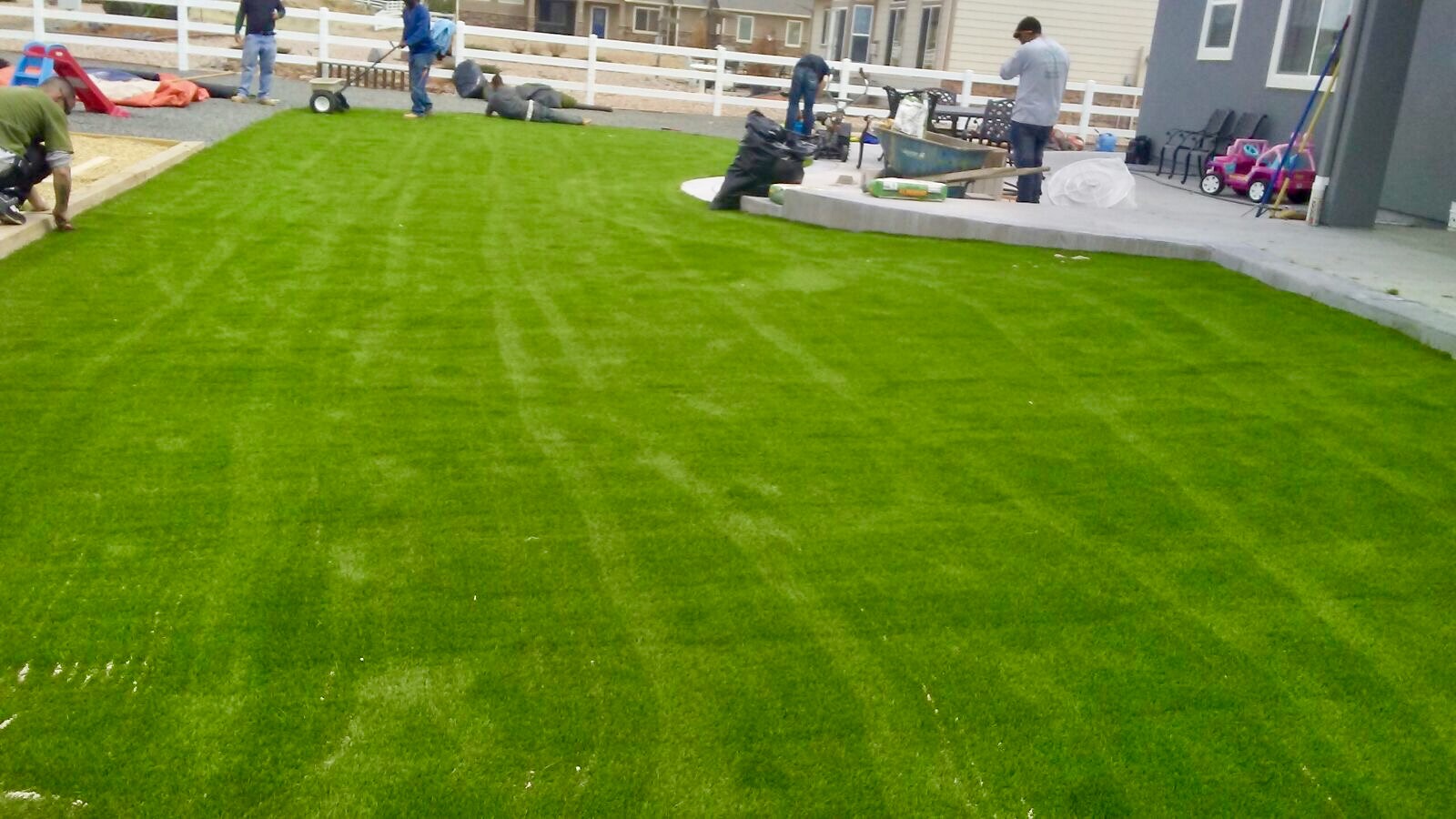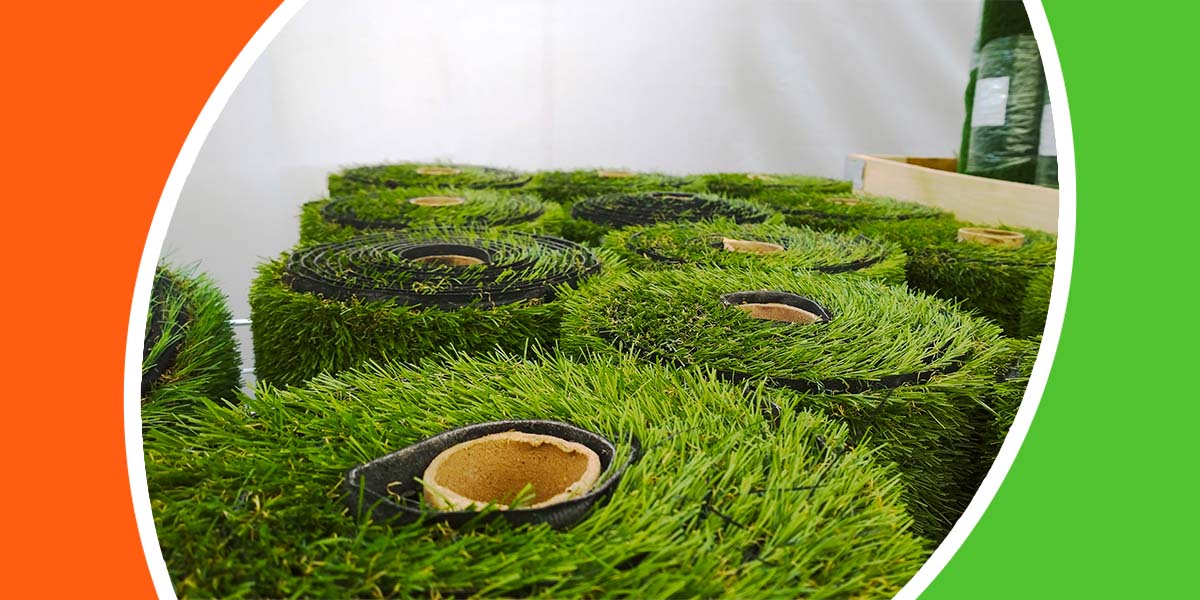Explore the Environmental Perks of Opting for Artificial Lawn Solutions
The adoption of synthetic lawn options provides a compelling possibility to resolve pushing ecological challenges. By considerably reducing water use and decreasing the application of damaging chemicals, these options not just promote sustainable landscape design yet also safeguard neighborhood ecological communities.
Water Conservation Conveniences
Among one of the most considerable benefits of fabricated turf is its capacity to conserve water. Conventional yard yards need substantial watering, specifically in areas prone to dry spell or water restrictions. In contrast, synthetic grass does not require watering, considerably decreasing the general need for water sources. This feature is especially helpful in deserts where water scarcity is a pressing issue.
By getting rid of the demand for normal watering, man-made grass adds to sustainable landscape methods and aids minimize the ecological impact of extreme water consumption. Additionally, the conservation of water extends to the decrease of drainage, which can result in soil erosion and river contamination.
Additionally, the setup of artificial lawn permits homeowners and towns to allot water sources much more successfully, concentrating on crucial uses such as alcohol consumption water and agriculture. The shift towards synthetic grass not only promotes responsible water usage yet also lines up with wider environmental objectives focused on preserving natural sources.
As neighborhoods progressively focus on sustainability, the water conservation advantages of synthetic turf offer an engaging case for its adoption in domestic and industrial landscape design projects.
Minimized Chemical Use
The change to artificial lawn dramatically reduces the dependence on chemical treatments commonly used in natural yard maintenance. Standard turf administration generally includes the application of pesticides, herbicides, and plant foods to advertise development and control pests. These chemicals can pose threats to human health and wellness, regional wild animals, and the environment, adding to soil and water contamination.
In contrast, fabricated grass removes the requirement for these harmful materials. By lessening the launch of synthetic substances right into the ecosystem, synthetic lawn advertises healthier soil and water systems.
In addition, the lack of chemical runoff connected with synthetic grass setups assists secure regional rivers from contamination, sustaining water life and keeping biodiversity. Artificial turf companies phoenix. As areas increasingly focus on sustainable methods, going with synthetic grass offers a viable service that lines up with environmental preservation objectives. With this change, residential or commercial property owners can appreciate lavish green areas without compromising environmental wellness, leading the method for a more sustainable future
Reduced Carbon Footprint

Furthermore, the installation of man-made turf can cause substantial water conservation. Natural lawns need substantial quantities of water for irrigation, which not just includes to the carbon footprint connected with water removal and treatment however also strains local water resources. On the other hand, fabricated turf needs marginal upkeep, calling for no watering, therefore substantially reducing water usage and its connected energy prices.
Furthermore, the longevity of synthetic turf adds to its reduced carbon impact. With a lifespan of as much as 15 years my explanation or even more, the demand for frequent replacements is lessened, leading to much less waste and lower energy usage in manufacturing and taking care of conventional turf choices. Overall, synthetic turf presents a sustainable option for eco conscious landscape design.
Habitat Conservation
Environment preservation is an important factor to consider in the debate over landscaping selections, specifically when contrasting synthetic grass to natural turf. All-natural lawn yards typically need comprehensive upkeep, including making use of chemicals, herbicides, and plant foods, which can negatively impact neighborhood environments. These chemicals can leach into the dirt and rivers, harming indigenous vegetation and animals and interfering with regional environments.
In contrast, synthetic turf presents a chance to decrease the ecological impact of landscaping. By choosing artificial yard, house owners see this website can lessen the disturbance of natural environments connected with typical lawn care methods. Fabricated grass gets rid of the need for hazardous chemicals, thereby safeguarding close-by wild animals and preserving the stability of surrounding communities. Additionally, the installment of man-made lawn can bring about the conversion of previous yard areas into even more biodiverse landscapes, such as pollinator yards or native plant areas, which can sustain local wild animals.
Eventually, the transition to synthetic grass not only preserves water and minimizes upkeep initiatives but likewise cultivates a much more harmonious partnership between human activities and the native environment, promoting habitat conservation while doing so.
Long-Term Sustainability
Long-lasting sustainability is a critical consider examining the advantages of synthetic grass over standard turf lawns. One of one of the most substantial benefits of synthetic grass is its durability; it can last approximately 15-20 years with marginal upkeep, whereas all-natural grass calls for constant reseeding and substitute. This durability minimizes the requirement for consistent sources, such as water, plant foods, and chemicals, which are necessary for preserving a healthy turf yard.
Additionally, artificial grass adds to a reduction in carbon emissions linked with grass treatment tools. Standard lawns frequently call for gas-powered Visit This Link lawn mowers, leaners, and blowers, every one of which add to air pollution. Artificial turf companies phoenix. On the other hand, synthetic grass eliminates the demand for such tools, promoting a cleaner environment
In addition, the manufacturing of synthetic grass progressively utilizes recycled materials, boosting its sustainability profile. As suppliers embrace eco-friendly techniques, the environmental impact of artificial grass continues to diminish.

Verdict
The fostering of artificial lawn remedies provides considerable environmental advantages, consisting of substantial water preservation, decreased dependence on dangerous chemicals, and a reduced carbon footprint. In addition, synthetic grass aids in preserving natural habitats by lessening land disruption and promoting long-lasting sustainability with the usage of long lasting materials. Collectively, these variables emphasize the potential of man-made lawn to contribute favorably to ecological health and wellness and provide a feasible choice to conventional landscape design methods in a significantly resource-conscious globe.
In comparison, fabricated turf does not require watering, dramatically decreasing the overall need for water sources. By lessening the launch of artificial compounds into the community, fabricated grass advertises much healthier soil and water systems.
Additionally, the installation of man-made lawn can result in substantial water conservation. In contrast, man-made lawn needs minimal maintenance, calling for no watering, consequently considerably lowering water use and its connected energy costs.
